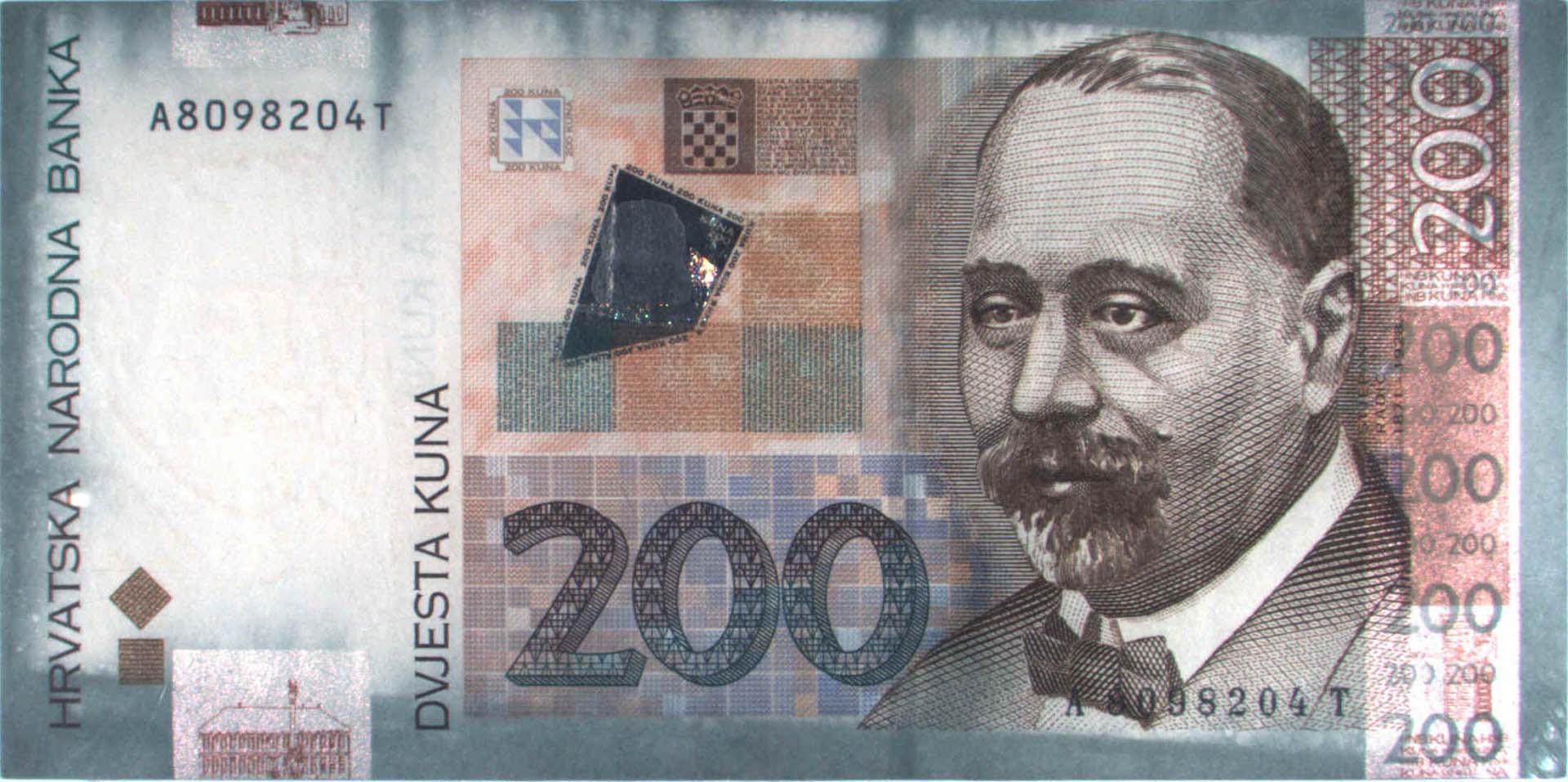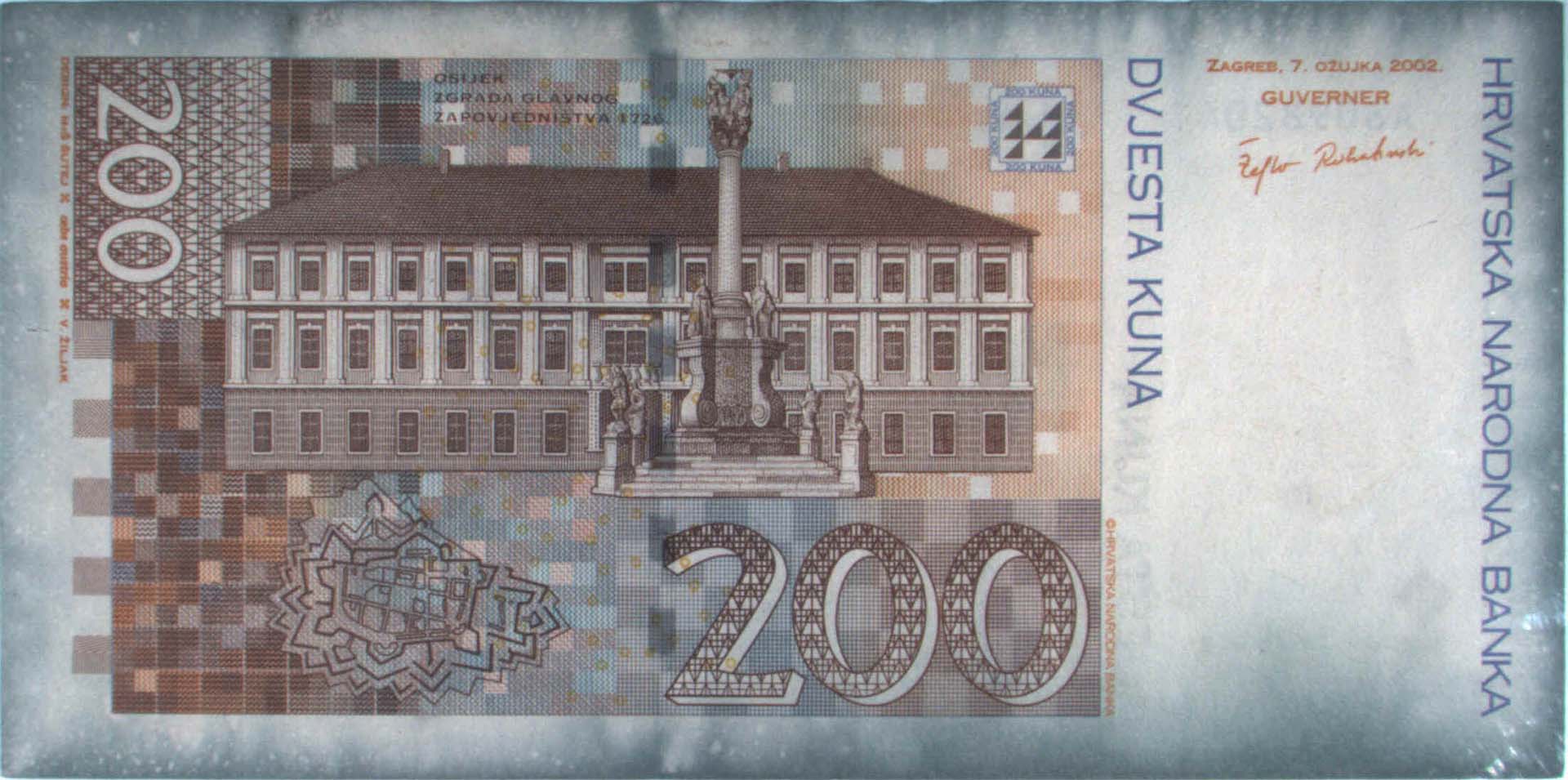The Croatian National Bank exchanges stained kuna banknotes if the conditions for the exchange relating to the exchange of kuna cash for euro cash are met.
Have you come into possession of a stained banknote?
A stained banknote, which looks like the ones in the photograph below, has very probably been stolen and stained by the ink from the electrochemical protection system of a banknote container (security container) during an attempted theft.
Photograph no. 1 Banknotes stained by the ink from a security container
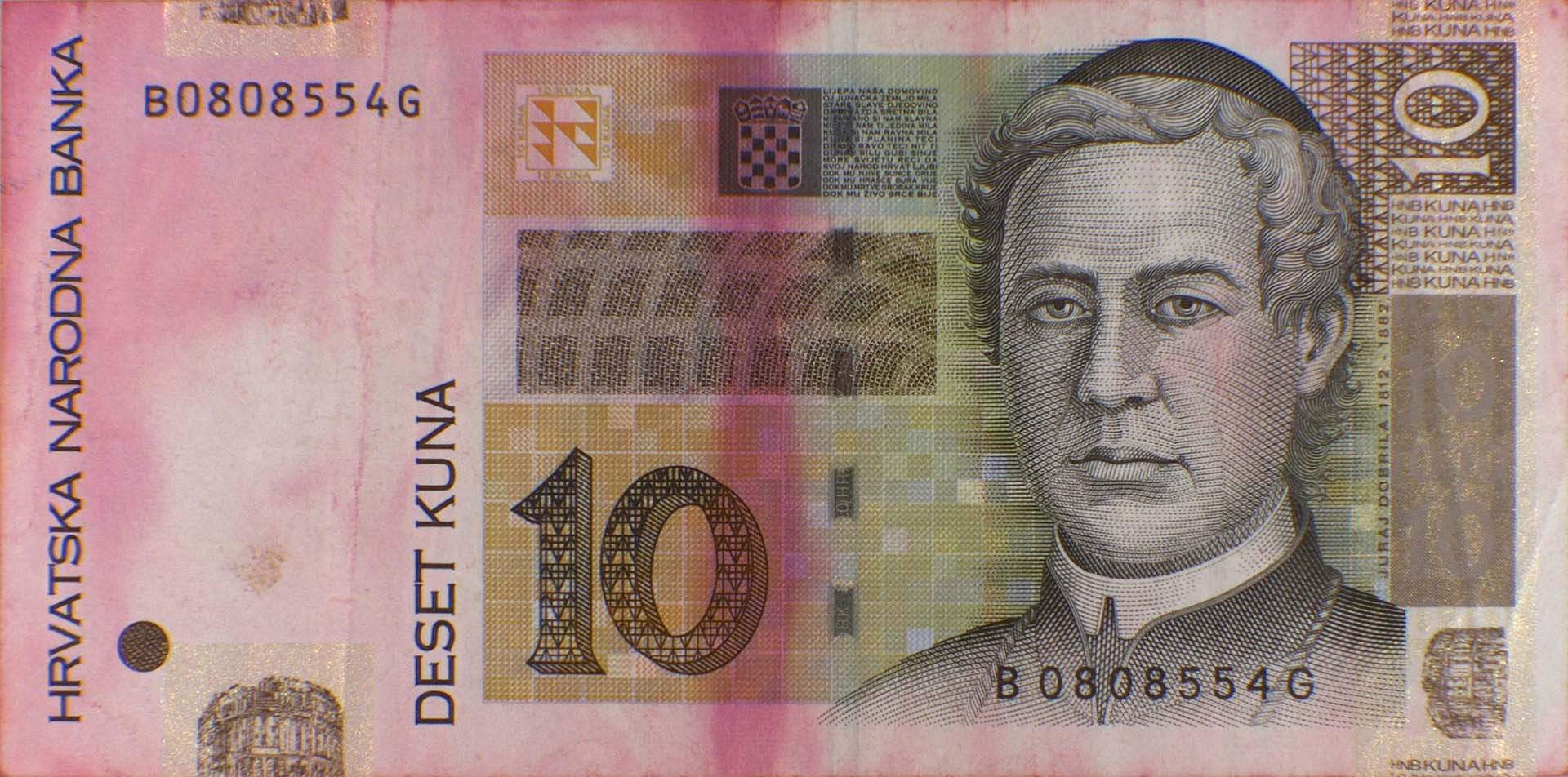
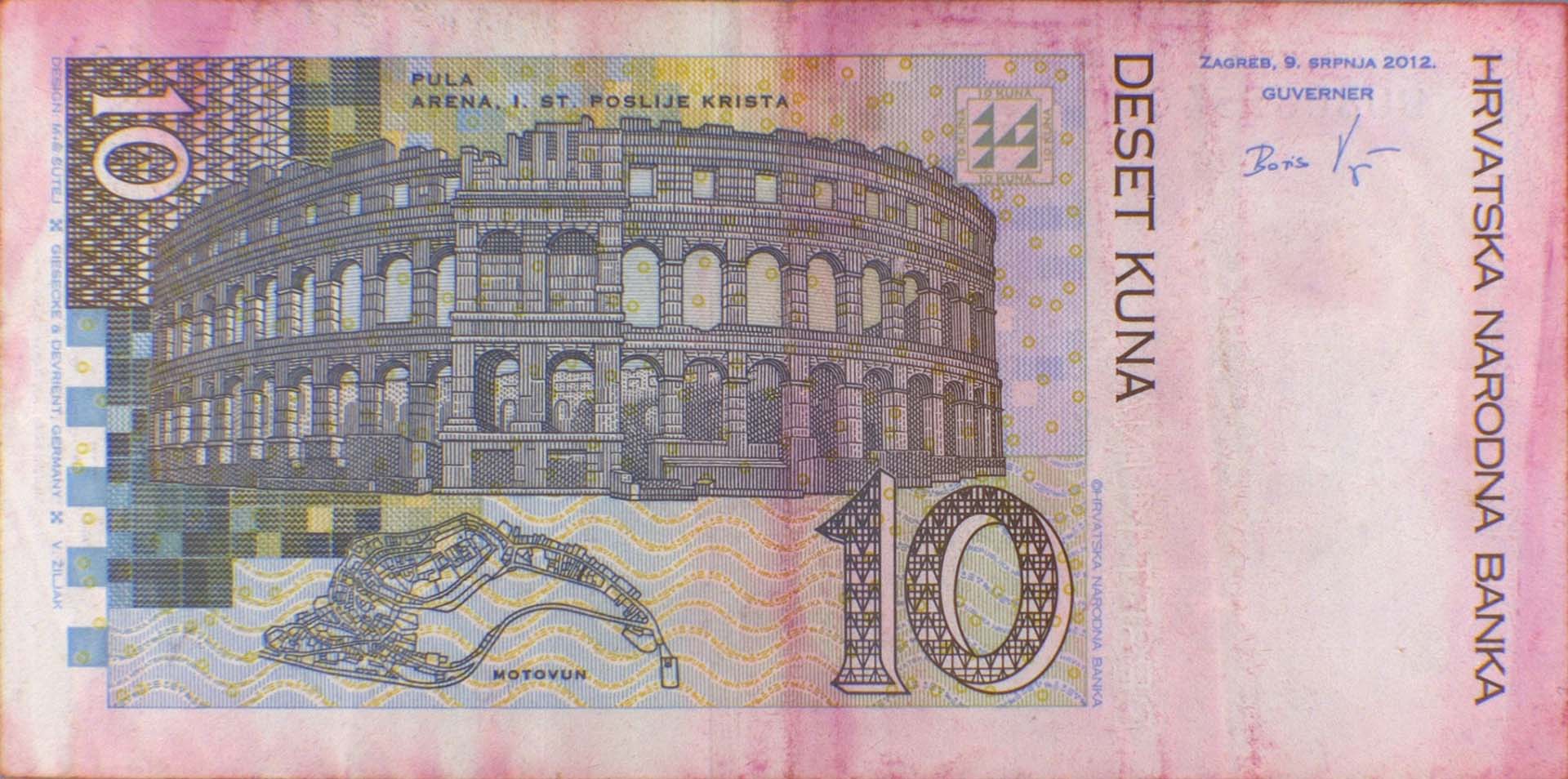
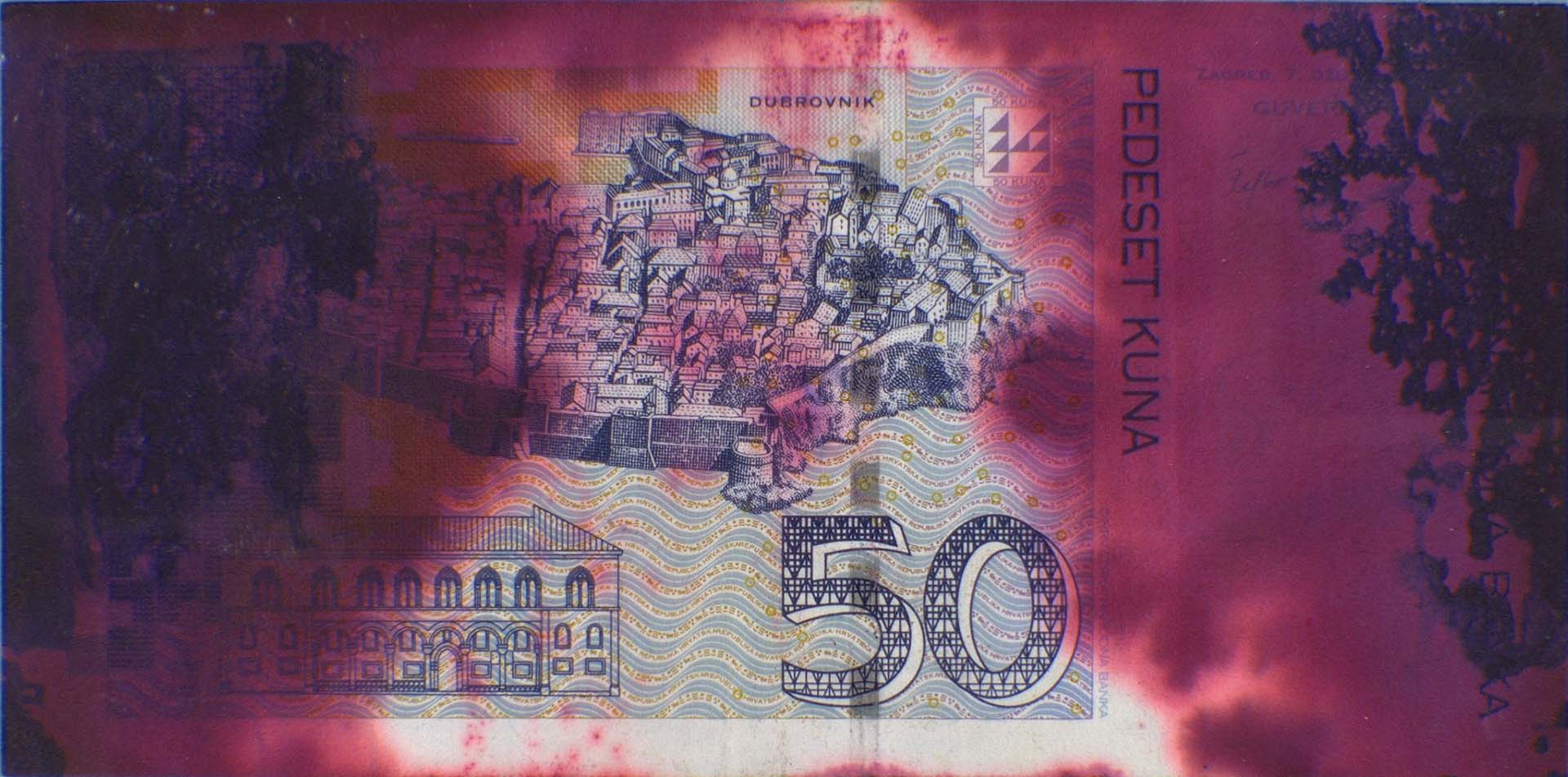
The ink on such banknotes originates from security containers that are activated when forcefully handled.
What to do with a stained kuna banknote?
- Send it to the Croatian National Bank in attachment to the Application for the exchange of kuna cash, which you should complete with all information available to you. The Croatian National Bank will verify if the stains have been caused by the activation of a security container and will, if necessary, call for the assistance of the police, which can use the banknote as evidence against an offender.
- If the analysis establishes that the stains have been caused by the activation of a security container, you will not be entitled to exchange. The Croatian National Bank exchanges banknotes stained by the ink from a security container only at the request of the legal owner of a stained banknote, accompanied by the documents proving the cause of the activation of security protection.
If the examination establishes that the stains have not been caused by the activation of a security container, the Croatian National Bank will exchange the stained kuna banknotes for the equivalent value in euro cash. When completing the Application for the exchange of kuna cash the bearer should describe in detail how the damage occurred.
How to recognise a banknote that is likely to have been stained in a theft attempt?
A banknote stained by the ink from a security container soaks in the ink and therefore displays characteristic stains and pronounced traces on the edges. The most common security ink colours are violet, green, blue, red and black. The ink usually spreads from the edges towards the centre of the banknote. Sometimes individuals wash the stained banknotes in order to remove the stains, which can alter the banknotes’ original colours and damage or even destroy their security features.
Photograph no. 2 A banknote damaged by washing at a high temperature
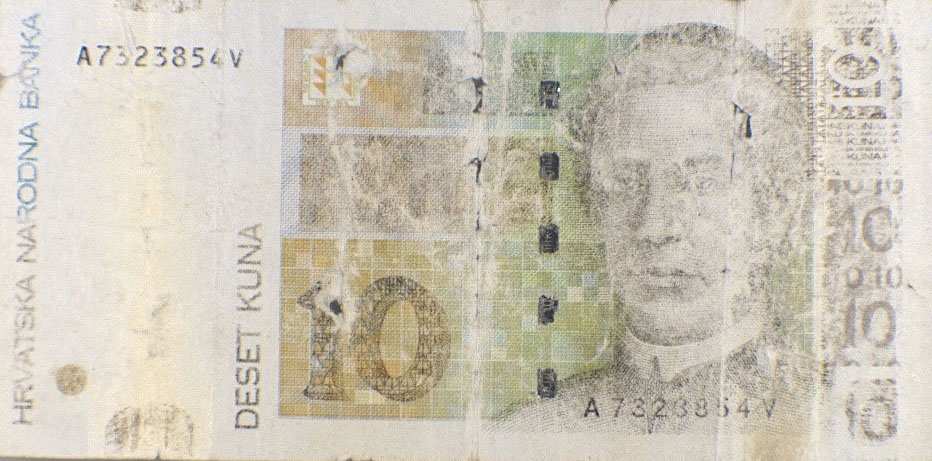
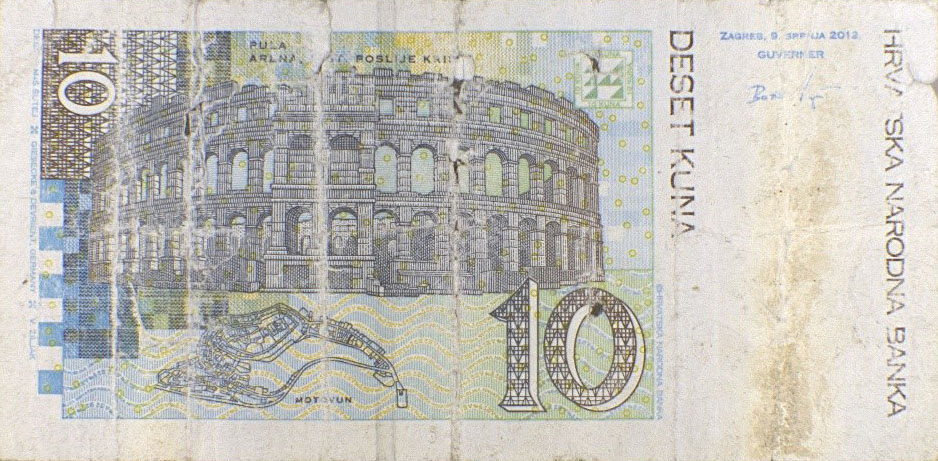
Does this mean that all stained banknotes have been stolen?
No. Banknotes displaying very light stains or those with only part of the surface stained and intact edges are most likely to have been ink-stained accidentally or while being washed in a washing machine, etc. Such banknotes have probably not been stolen. In order to realise your right to the exchange of kuna cash for euro cash, send the banknotes to the Croatian National Bank in attachment to the Application for the exchange of kuna cash.
Photograph no. 3 A banknote washed and stained in a washing machine
